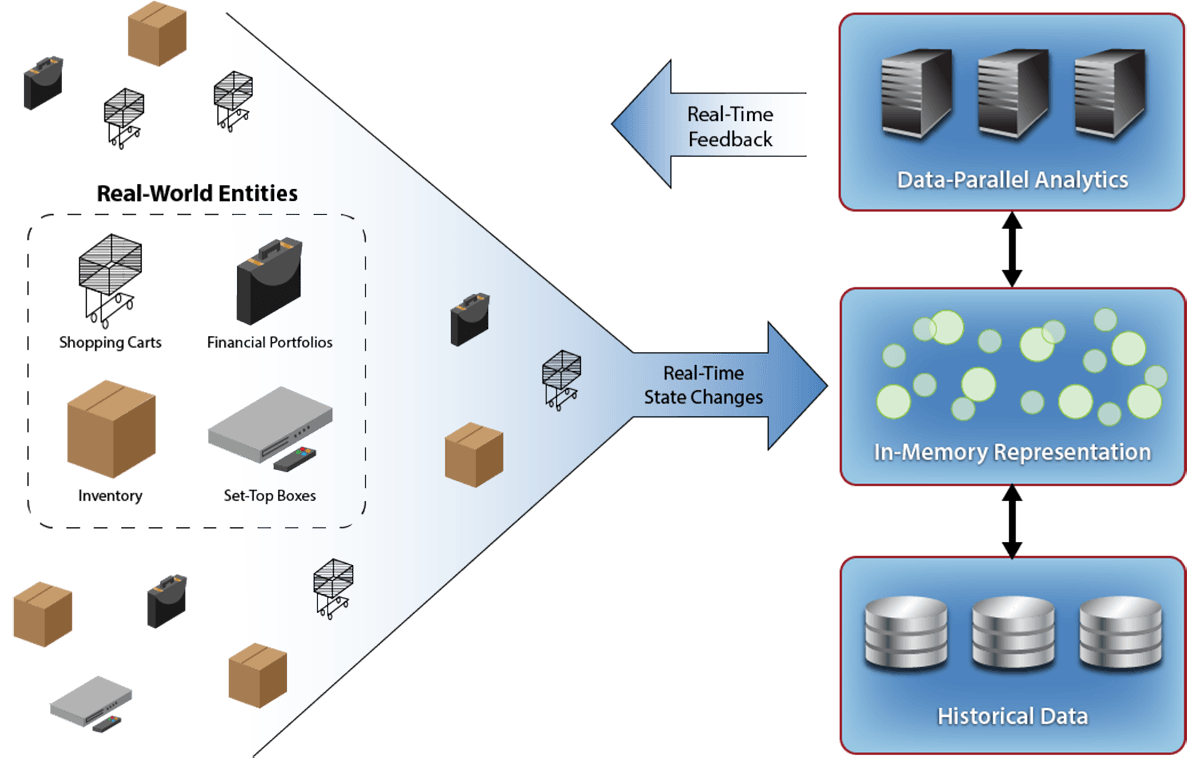How In-Memory Computing Enables the IoT
Analytics strategies that focus on analyzing static data, such as last week’s machine logs, can help identify long term trends, but they cannot react fast enough to capture business opportunities in the moment. The IoT needs real-time analytics that can track live, continuously-updated data with extremely low latency.
The secret sauce that makes this possible is in-memory computing. This technology has been used for more than a decade to store and update large, fast-changing data sets, such as shopping carts and financial data. More recently, ScaleOut Software introduced scalable, in-memory computing capabilities to give this computing platform the horsepower needed to rapidly analyze live data and provide immediate feedback. For example ScaleOut StateServer Pro can analyze a terabyte of continuously changing data in a few seconds or less.
As illustrated in the following diagram, ScaleOut StateServer Pro’s in-memory data grid tracks real-time state changes generated by an array of intelligent devices and maintains an in-memory representation of the state of these devices, enriched by historical information held on disk. It then uses data-parallel analytics to look for patterns and generate real-time feedback as required, providing operational intelligence.

Using In-Memory Computing to Analyze Data from the IoT
